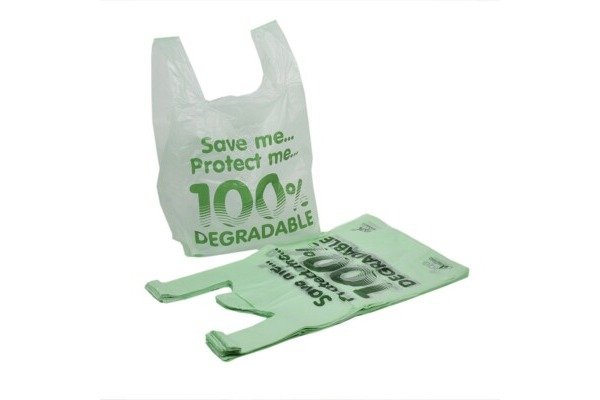
Plastic bags drifting in the wind or floating in water pose a significant environmental risk1. When animals mistake them for food, the consequences can be severe—leading to suffocation, internal injury2, and even death.
Ingesting a plastic bag can cause suffocation, intestinal blockage, and starvation. Because plastic is indigestible, it fills the stomach, prevents real digestion, and causes internal damage. The animal eventually starves, even with a full stomach.
The primary issue is that animal digestive systems cannot process plastic. Once inside the body, a plastic bag remains intact, creating a physical blockage. The animal feels full and stops eating, but receives no nutrients. This often leads to malnutrition, starvation, internal tears, and infections—all potentially fatal.
Affected Wildlife
Plastic bag ingestion impacts animals across various ecosystems:
- Marine animals – Sea turtles often mistake plastic bags for jellyfish, a key part of their diet. Whales and dolphins can swallow bags during feeding.
- Land animals – Grazing animals such as cows or goats may unknowingly eat bags mixed in with their food.
- Birds – Birds can consume plastic fragments or feed them to their chicks, resulting in fatal outcomes.
Do Biodegradable Bags Prevent Harm to Wildlife?
Biodegradable bags may seem like a safer alternative, but they are not without risk.
Although biodegradable bags3 break down faster than conventional plastic, they can still cause blockages and death if eaten before they degrade. Their safety depends heavily on environmental conditions.

Understanding the label "biodegradable" is essential to evaluating their impact.
What "Biodegradable" Really Means
The term "biodegradable" does not guarantee that the plastic will break down in any environment.
- Industrially Compostable – Materials like PLA (polylactic acid) require high temperatures and specific microbes, typically found only in industrial composting facilities. In oceans or forests, they may persist for years.
- Home Compostable – Some materials, such as PHA (polyhydroxyalkanoates), can break down in natural soil or backyard compost bins. However, decomposition still takes time, during which animals may ingest the material.
BagMec® manufactures machines designed to process these materials effectively. Their systems handle delicate bioplastics like PLA, enabling clients to produce fully compostable bags. For instance, BagMec® co-developed machinery with a U.S. eco-brand to produce 100% compostable shopping bags.
Comparing Plastic Types and Wildlife Risks
Different plastics have different environmental persistence and dangers. The table below summarizes their risks:
| Plastic Type | Risk if Ingested | Degradation Time (Nature) | Potential for Harm |
|---|---|---|---|
| Conventional PE | Blockage, Entanglement | 500+ years | High |
| PLA (Bioplastic) | Blockage (if ingested) | 1–5 years (under ideal conditions) | Moderate |
| PHA (Bioplastic) | Blockage (if ingested) | 6–24 months | Lower |
Engineering's Role in Reducing Environmental Impact
Machinery design plays a role in reducing plastic pollution. BagMec® engineers machines that help producers transition to safer materials. Their "Smart Tension Control" technology improves efficiency when handling delicate films and reduces production waste. Energy-efficient servo motors lower power usage by up to 30%, making sustainable manufacturing more accessible.
Long-Term Ecological Effects of Plastic Bag Pollution
While individual animal deaths are tragic, the long-term effects of plastic pollution are even more troubling.
Plastic bags break down into microplastics, which absorb toxins and enter the food chain—harming entire populations and destabilizing ecosystems.
Microplastics and Ecosystem Contamination
Plastic bags photodegrade into microplastics, not biodegrade. These tiny particles present multiple risks:
- Chemical Absorption – Microplastics soak up toxic pollutants, including heavy metals and pesticides.
- Environmental Ubiquity – They are found everywhere—from ocean trenches to mountain peaks and even in the air.
Microplastics in the Food Chain
Microplastics move through the food chain in a process called biomagnification:
- Plankton and Shellfish – Consume microplastics directly.
- Small Fish – Eat contaminated plankton and shellfish.
- Larger Predators – Such as tuna, seabirds, or seals, consume smaller fish.
At each stage, toxin concentration increases, affecting reproduction, health, and survival rates of top predators.
Supporting a Circular Economy Through Engineering
Manufacturing plays a central role in moving toward a circular economy4. BagMec®'s machines support recyclable and compostable materials5 to help close the loop. Their FFS (Form-Fill-Seal) machines, used by a German packaging company, achieved 99% uptime and an 18% reduction in material waste—minimizing pollution risk.
Conclusion
Animals that ingest plastic bags often suffer and die. Biodegradable options are not inherently safe and depend on environmental factors to degrade. The long-term solution lies in advanced manufacturing, responsible practices, and a shift toward materials that can be reused, recycled, or composted safely. BagMec® continues to engineer technologies that support this sustainable future.
-
Understand the broader environmental risks posed by plastic pollution beyond wildlife. ↩
-
Understand the severe health risks animals face when they ingest plastic. ↩
-
Learn about the effectiveness and limitations of biodegradable bags in reducing plastic pollution. ↩
-
Explore the concept of a circular economy and its importance in reducing plastic waste. ↩
-
Learn about the advantages of using compostable materials in reducing plastic pollution. ↩






